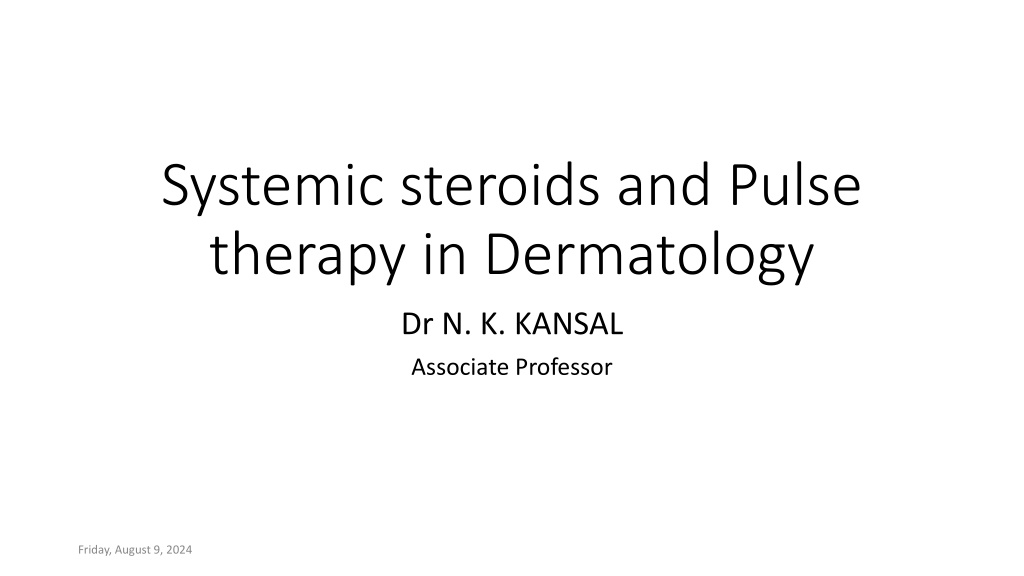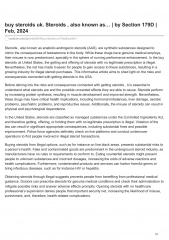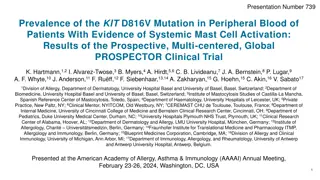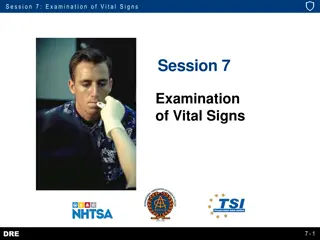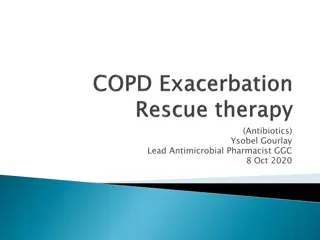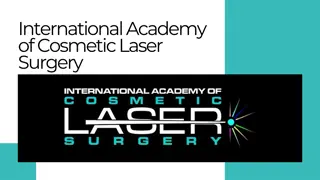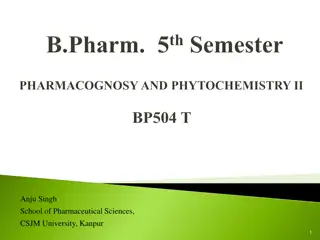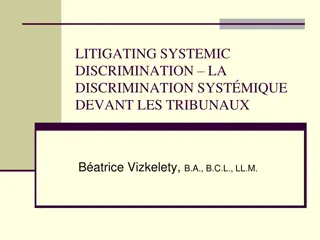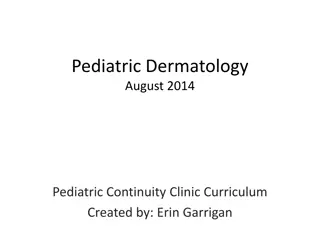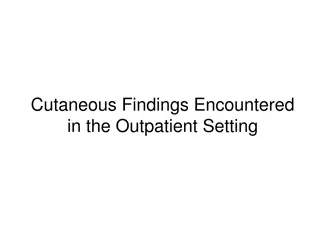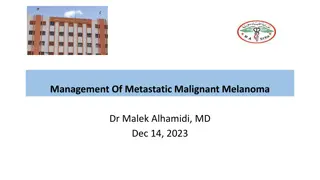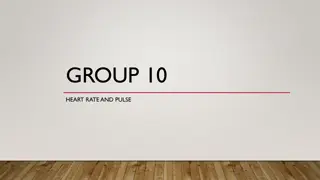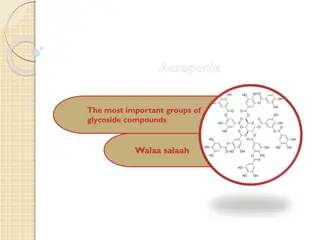Understanding Systemic Steroids and Pulse Therapy in Dermatology
Systemic steroids, potent immunosuppressive and anti-inflammatory agents, play a crucial role in dermatological therapy. This article discusses the pharmacology, mechanism of action, cellular effects, and clinical applications of glucocorticoids. It covers topics such as cortisol synthesis, glucocorticoid action on cell movement and replication, effects on macrophage functions, and the use of short courses for various dermatitis conditions.
Download Presentation

Please find below an Image/Link to download the presentation.
The content on the website is provided AS IS for your information and personal use only. It may not be sold, licensed, or shared on other websites without obtaining consent from the author. Download presentation by click this link. If you encounter any issues during the download, it is possible that the publisher has removed the file from their server.
E N D
Presentation Transcript
Systemic steroids and Pulse therapy in Dermatology Dr N. K. KANSAL Associate Professor Friday, August 9, 2024
Systemic glucocorticoids Potent immunosuppressive and anti-inflammatory agents Knowledge of basic pharmacology - essential to maximize their efficacy and safety as therapeutic agents
Major naturally occurring glucocorticoid Cortisol (hydrocortisone) Synthesized from cholesterol by the adrenal cortex Normally, <5% of circulating cortisol is unbound the active therapeutic form Remainder - inactive
Mechanism of glucocorticoids action Passive diffusion of the glucocorticoids through the cell membrane F/b binding to soluble receptor proteins in the cytoplasm The hormone-receptor complex then moves to the nucleus Regulates the transcription of its target genes
Cellular effects of glucocorticoids Affect the replication and movement of cells Induce monocytopenia, eosinopenia, and lymphocytopenia Lymphocytopenia - a redistribution of cells - migration from the circulation to other lymphoid tissues Increase in circulating PMN leukocytes - movement of cells from the bone marrow, diminished rate of removal from circulation and possibly inhibition of neutrophil apoptosis
Macrophage functions, including phagocytosis, antigen processing and cell killing - decreased by cortisol This affects immediate and delayed hypersensitivity Granulomatous infectious diseases (e.g. tuberculosis) - prone to exacerbation/ relapse during prolonged glucocorticoid therapy Antibody-forming cells, B lymphocytes and plasma cells - relatively resistant to effects of glucocorticoids
Short courses of glucocorticoids Have been used for Severe dermatitis Contact dermatitis Atopic dermatitis Photodermatitis Exfoliative dermatitis & Erythrodermas
Fundamental principles of glucocorticoids therapy Before glucocorticoids therapy with is begun - the benefit Alternative/ adjunctive therapies (azathioprine, cyclophosphamide) Especially if long term treatment Coexisting illnesses such as diabetes, hypertension and osteoporosis need consideration
Diet during glucocorticoids therapy Low in calories, fat and sodium High in protein, potassium and calcium as tolerated Also consider associated comorbidities Protein intake - to reduce steroid-induced nitrogen/ muscle wasting Minimize alcohol, coffee and nicotine/ smoking Encourage exercise Basic preventative measures to be followed
Potential adverse effects A plethora of variety of side effects, when used in high (supra physiological) doses and in long term regimens Short courses (2 3 weeks) of GCs - relatively safe
Side effects due to mineralocorticoids action Hypernatraemia and water retention Hypertension and weight gain Hypokalaemia, hypocalcaemia
Side effects due to glucocorticoids action Hyperglycaemia, development of diabetes Deterioration of diabetic control Dyslipidaemia hypertriglyceridaemia, hypercholesterolaemia Increased appetite, weight gain Menstrual irregularities Cushingoid features (lipodystrophy) moon face, buffalo hump , central obesity (thin limbs, plump trunk)
Cutaneous side effects Purpura, bruising, striae, dermal and epidermal atrophy, telangiectasia Steroid acne , rosacea like syndrome Impaired wound healing Hirsutism Fat atrophy with injected GCs Cutaneous infections staphylococcal and herpetic Hyperhidrosis
Osteoporosis. Osteonecrosis (avascular necrosis). Growth impairment in children. Gastrointestinal Peptic ulceration. Bowel perforation (particular risk with active diverticulitis and recent bowel anastomosis). Pancreatitis. Fatty liver. Gastro oesophageal reflux. Candidiasis.
Psychiatric - occur in approximately 6% of patients Psychosis. Euphoria, depression, agitation. Suicidal ideation. Insomnia, nightmares. Irritability, mood lability.
Ocular Ocular hypertension and glaucoma. Cataracts posterior subcapsular. Central serous chorioretinopathy. Ocular infections, including herpes simplex. Neuromuscular Muscle weakness (proximal myopathy). Intracranial hypertension (pseudotumor cerebri). Spinal epidural lipomatosis.
Infections Tuberculosis reactivation. Opportunistic infections (consider Pneumocystis jiroveci pneumonia prophylaxis)
Prior to initiating GC therapy The patient and family members provided adequate counselling Information about the potential adverse effects A steroid treatment card - to be provided
Dosage regimens Oral administration - Depends on: Clinical diagnosis Severity Presence of other factors Prednisolone (or equivalent) at a starting dose of up to 1 mg/kg bw/d, ideally given as a single morning dose Less likely to cause adverse effects Less likely to result in HPA axis suppression
Pulse therapy Oral IV Pulse therapy (DCP, DP, methylprednisolone) Administration of supra-pharmacologic doses of drugs in an intermittent manner - pulse therapy In pemphigus, pulse therapy refers to intravenous (IV) infusion of high doses of steroids for quicker, better efficacy and to decrease the side effects of long-term steroids
Feduska et al. first used pulse therapy in 1972 for reversal of renal allograft rejection In India, JS Pasricha & Ramji Gupta, 1984
Oral minipulse therapy (OMP) Corticosteroids therapy i.e., dexamethasone/betamethasone On 2 consecutive days in a week Can be continued for up to 3-6 months MC Indications vitiligo, alopecia areata
DCP / DP Pulse therapy DCP DP Methylprednisolone - also used Most common indication - Pemphigus
Medications Dexamethasone (100 mg) economic option or methylprednisolone (20-30 mg/kg) With cyclophosphamide 500 mg on 2nd day of pulse
Modifications Dexamethasone-azathioprine pulse (DAP): Cyclophosphamide is replaced by daily oral azathioprine. No bolus dose of azathioprine is given during the pulse DAP is recommended for unmarried patients Who have not completed their family (Cyclophosphamide not given- gonadal failure at a cumulative dose of 30 g and 12 g in women and men)
Common side effects Mood and behavior alteration, hyperactivity, psychosis, disorientation and sleep disturbances - 10% patients Hyperglycemia, hypokalemia Infections Hiccups, facial flushing, diarrhea, weakness, Generalized swelling, myalgia Arrhythmias and shock
